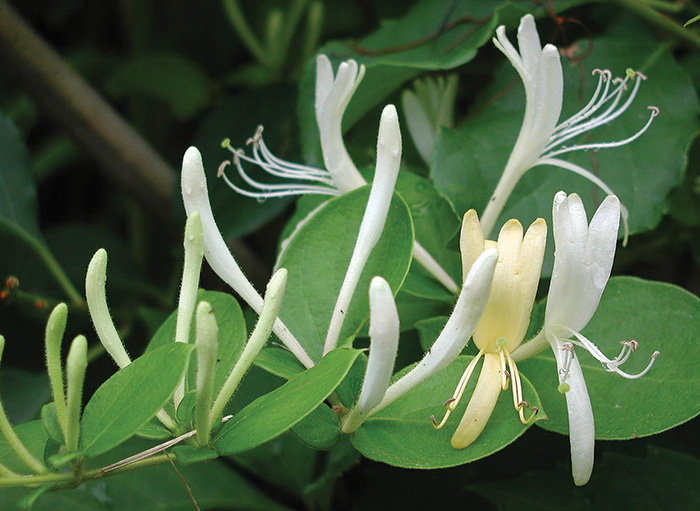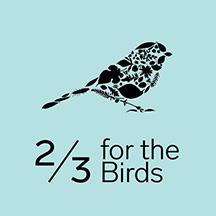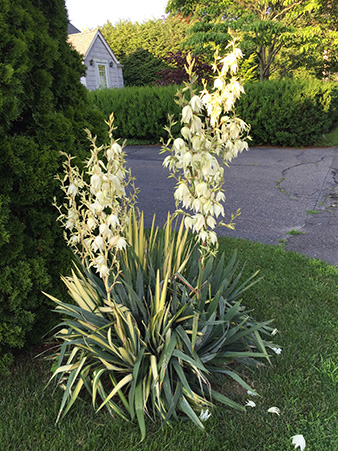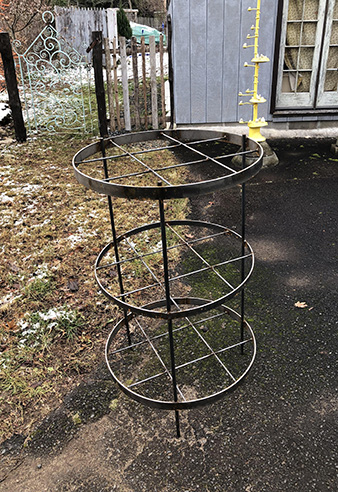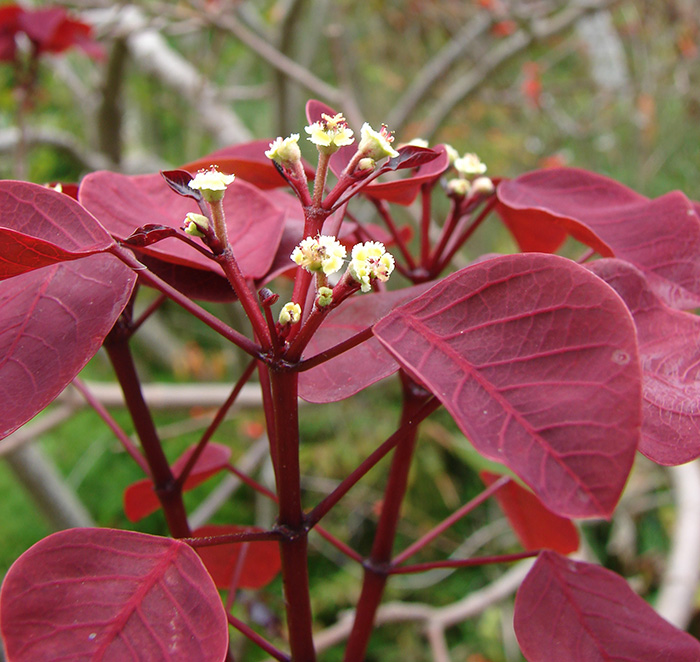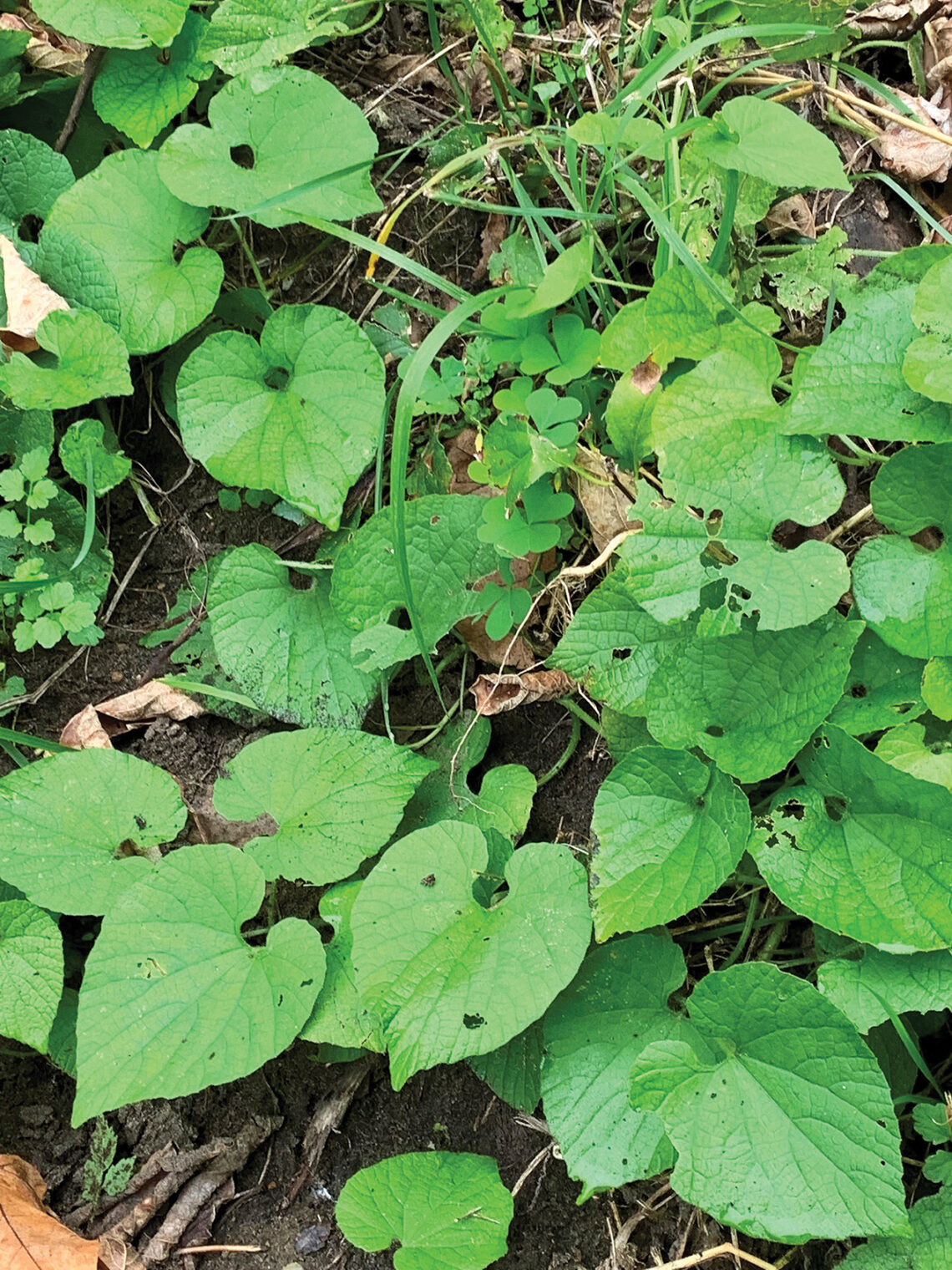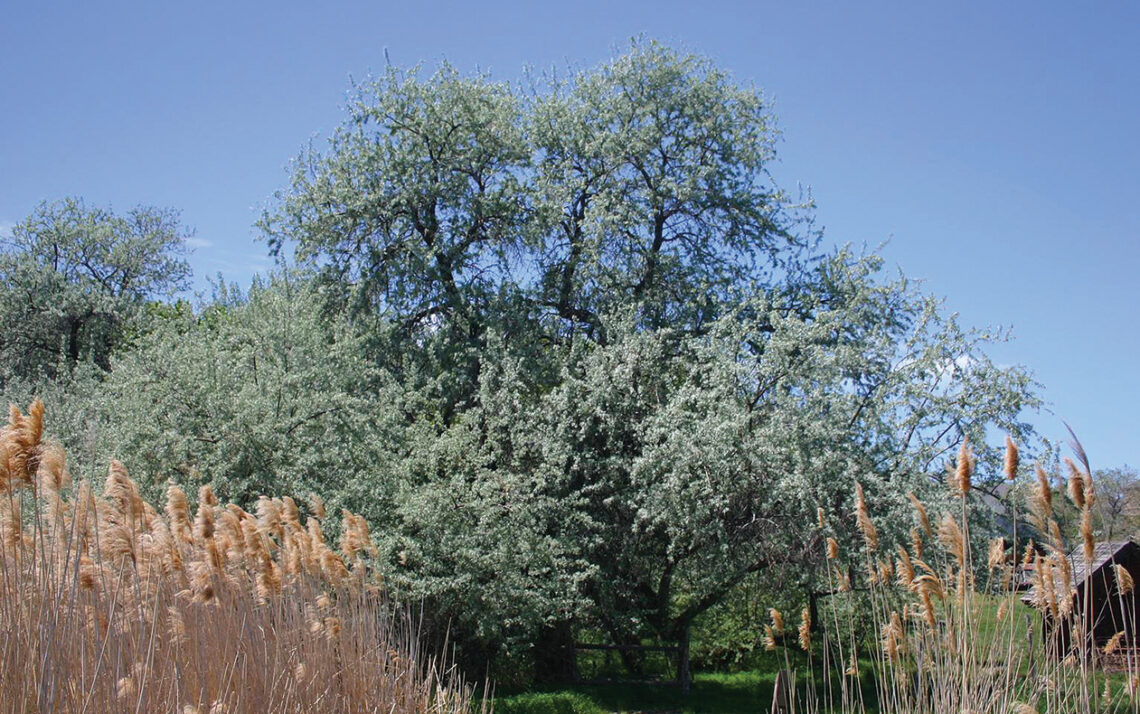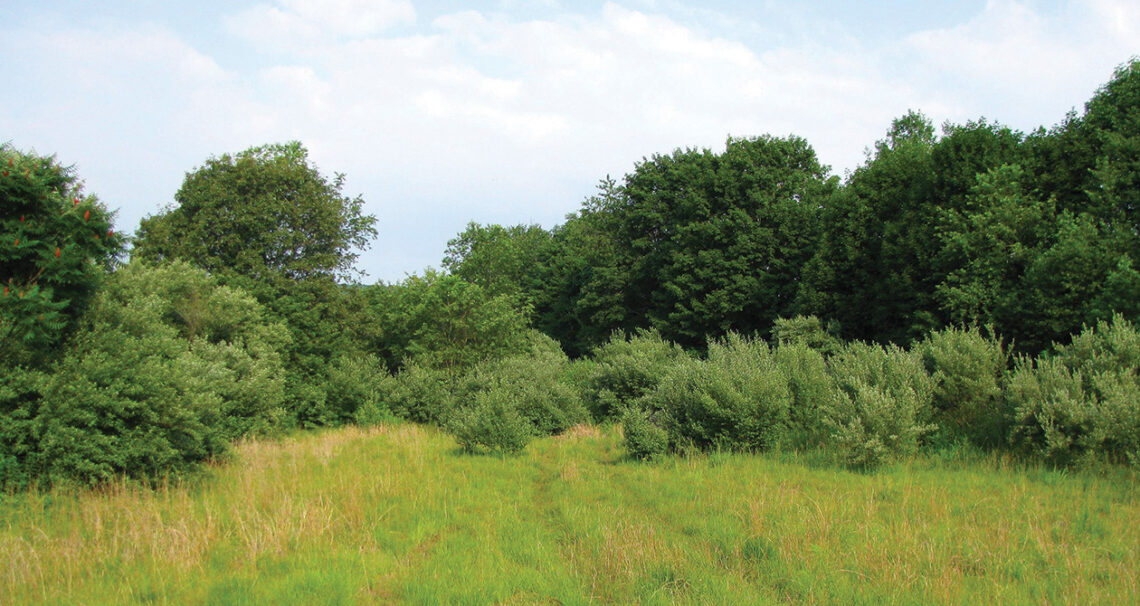In case you didn’t get the memo, trees are really important. Forests are literally the lungs of planet Earth and trees like oak (Quercus spp) support hundreds of species of butterflies and moths, which in turn support our local bird communities. I was excited to read Beresford-Kroeger’s new book and hear her viewpoint. She’s a scientist who brings a certain je ne sais quoi to the mix because she was also steeped in ancient celtic knowledge at an early age. She may be the last person to have been taught this way directly. Diana isn’t your average writer, she’s a polymath with undergrad degrees in botany and medical biochemistry and…
-
-
Invasive Honeysuckles
First off, a big thank you to the subscriber who came up to me at the CT Flower & Garden Show in Hartford in February and asked about invasive honeysuckles. I don’t know how but honeysuckles have somehow escaped being featured as an invasive in Connecticut Gardener. Until now, that is! Very tricky of it. A whopping six species of Lonicera are considered invasive in Connecticut. Perhaps the best known, Lonicera japonica (Japanese honeysuckle), is a perennial woody vine. The other five are perennial shrubs. How Do You Tell Them Apart? There are a number of botanical differences but the easiest one to remember is this … native honeysuckles have…
-
Two-Thirds for the Birds
By Will Rowlands We’ve been promoting native plants ever since we took over Connecticut Gardener magazine in 2010. The reason for this is fairly simple … biodiversity is a good thing. It’s not only better for birds, pollinators and insects, it also creates a more resilient ecosystem. A yard with a large lawn and some boxwoods doesn’t do anybody any good, ecologically speaking, especially if you’re using chemicals to maintain the property. It’s essentially an ecological wasteland at a time when populations of birds, pollinators, insects and native plants are all declining. We’re excited to see that native plants have finally begun to get some traction in the last few…
-
The Iron Yucca
How does a gardener/homeowner deal with a constant parade of dog walkers and their pooches stopping, sniffing, and marking territory? In some neighborhoods the constant showers can be really tough on — if not deadly to — the plants that are targeted. While walking around town I’ve seen an assortment of signs warning dog owners to keep their companions from watering plantings; some are cute, some get a little snarky, and some have a nearby jug of water at the ready, presumably for the dog’s guardian to douse a plant when the dog fails to read the sign. Not having a dog, I’m no expert on the etiquette involved but…
-
Jumping Worm Protocol
A new season of plant sales, swaps, and gardening means facing the jumping wormproblem. Avoiding New IntroductionsHere’s a compendium of broad guidelines from several university extensions and the Connecticut Agricultural Experiment Station (CAES) to help you deal responsibly with these invaders going forward. To avoid unwanted introductions, one should have a basic management protocol in place. The boxed links offer a deeper dive and can help those new to jumping worms catch up. The enemy: Jumping worms (Amynthas spp.) are smooth, glossy brown or grayish and they move more like a snake than a ‘traditional’ earthworm. They hatch in April/May from eggs in protected cocoons laid in the fall, live…
-
Storing Stakes
Last fall I asked Bob Keating, renowned metal sculptor and plant support creator (and advertiser), if he could help us solve a problem: we needed a better – and more presentable – way to hold the many stakes and poles used in our garden. A stakeholder. When not in use and over the winter, we leaned them up against the fence, placed them on the cross struts behind the fenceposts, or laid them down on the ground near the base. After replacing the fence in 2021 and no longer willing to put up with such clutter we started using an old Rubbermaid trash can with holes in the bottom. Well,…
-
Annuals
Photo / Forest & Kim Starr, CC BY 3.0Euphorbia cotinifolia (Tropical Smokebush) By Steve Silk PART I – ANNUALS IN THE SUMMER GARDEN Pastels are pretty in spring, but come the dog days of summer, those dainty pinks, powdery blues, and pale primrose yellows look mostly milquetoast. They’re wimpy. Washed out. When the July and August sun blazes mercilessly on the landscape, it’s time for gardeners to bring out the big guns – bright, saturated, full strength color and plenty of it. We’re talking smoldering reds, fiery oranges, sunny yellows and maybe a deep, dark blue or two. Those unashamedly bold hues are just the antidote for summer heat and…
-
Goldencreeper Found in Kent
A CAES PRESS RELEASE The Connecticut Agricultural Experiment Station (CAES) has announced the discovery of a new non-native invasive plant in Connecticut. Scientists from CAES in collaboration with Robin Zitter and Nikolle Lizana, a local horticulturist and landscape gardener, respectively, have discovered Goldencreeper (Thladiantha dubia), a highly invasive non-native plant, in Kent. Goldencreeper, aka Manchu tuber gourd, is a member of the gourd (Cucurbitaceae) family. It is native to Northeastern China, Korea, and Russia. It is believed to have been introduced into North America as an ornamental plant. Currently, it is present in Illinois, Massachusetts, Minnesota, New Hampshire, New York, and Wisconsin inthe United States and in the provinces of…
-
Invasive Russian Olive
RUSSIAN OLIVE (Elaeagnus angustifolia) is native to southern Europe and western Asia. According to the Native Plant Trust “it has been planted extensively throughout the United States as a windbreak, ornamental shrub, soil stabilizer, and wildlife attractant.” It was brought to the United States in the early 1900s. For many years, the U.S. Soil Conservation Service (nowthe Natural Resources & Conservation Service) recommended it for wildlife habitat and as a windbreak. IdentificationRussian olive is a thorny shrub or small tree that can grow to 25 feet or higher. It prefers disturbed areas, roadsides, forest edges, meadows and fields. The lanceolate leaves are arrangedalternately. They’re 1.5-3.25 inches long with a smooth…
-
Invasive Autumn Olive
AUTUMN OLIVE (Elaeagnus umbellata) is a large deciduous shrub or small tree that’s considered invasive in Connecticut. Native to Eastern Asia, from the Himalayas to Japan and Korea, it’s also called Japanese silverberry, Japanese oleaster and cardinal olive. Introduced to the U.S. in 1917 it has been used as an ornamental but also for wildlife habitat and erosion control. In Connecticut it was routinely planted along the sides of highways. IdentificationAutumn olive can grow to 20 feet or more. It has alternate oval leaves with wavy margins. The 2-4 inch long leavesare gray-green on top and silver underneath. Some branches may have sharp thorns. The fragrant flowers are arranged in…

